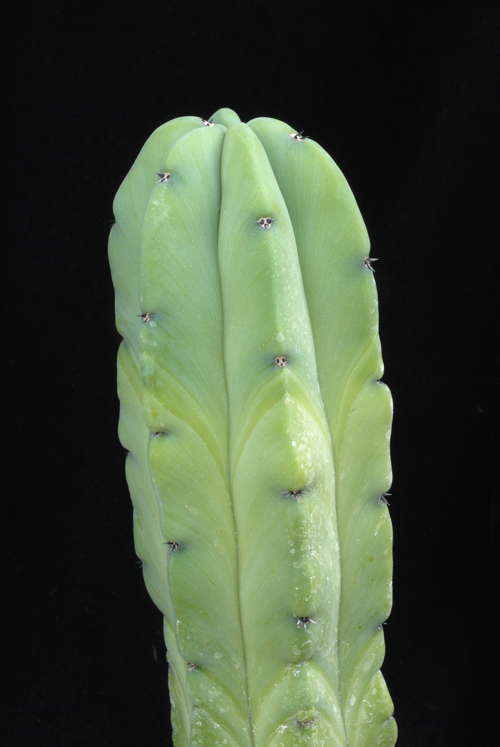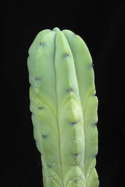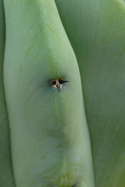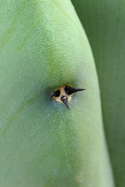M. cochal is distributed through much of central Baja California but also ranges northward into the California Floristic Province along the Pacific coast of northern Baja. As such, it seems to be equally tolerant of the summer monsoons of the southern part of its range as well as of the winter rains of the northern, Mediterranean-climate portion. In fact, this species is pretty much indestructible, making it a popular choice for cactus gardens as is its more widespread and very similar cousin from mainland Mexico, M. geometrizans. The latter has been a grafting stock of choice especially in its more slender, relatively spineless juvenile stage. The plant offered here is more robust, usually about 8 cm (3") diameter, and is also relatively spineless, a characteristic that distinguishes it from most other clones that typically have stout, black to gray spines, the central often flattened and dagger-like. The relative spinelessness of this clone recommends it as grafting stock and its robustness may impart more longevity than some stocks. Its spinelessness is what attracted nurseryman and Baja explorer Gil Tegelberg to bring this particular form into cultivation. In view of its distinctness, Howard Gates called it M. tegelbergii, but this name was never published. It is here recognized as a cultivar honoring Tegelberg who collected it on an expedition with Gates in January, 1938. It grew on the plateau south of San Ignacio, along the road out of La Purisima, Baja California Sur, Mexico. This was long before the completion in 1973 of the Transpeninsular Highway 1, when travel to that part of Baja was a significant expedition. The plant flowers freely, even as a fairly small potted plant, and readily produces its small purple fruits that resemble those of wild blueberries or the fruit of the myrtle (Myrtus communis), inspiring the generic name. If left on the plant, these will shrivel and become raisin-like, providing tasty grazing over a long period. Since the genus is characterized by multiple flowers per areole, that means multiple fruits as well. Rooted cuts of HBG 72571, $8.

Published in the Cactus and Succulent Journal, Vol. 87 (3), May - June, 2015


